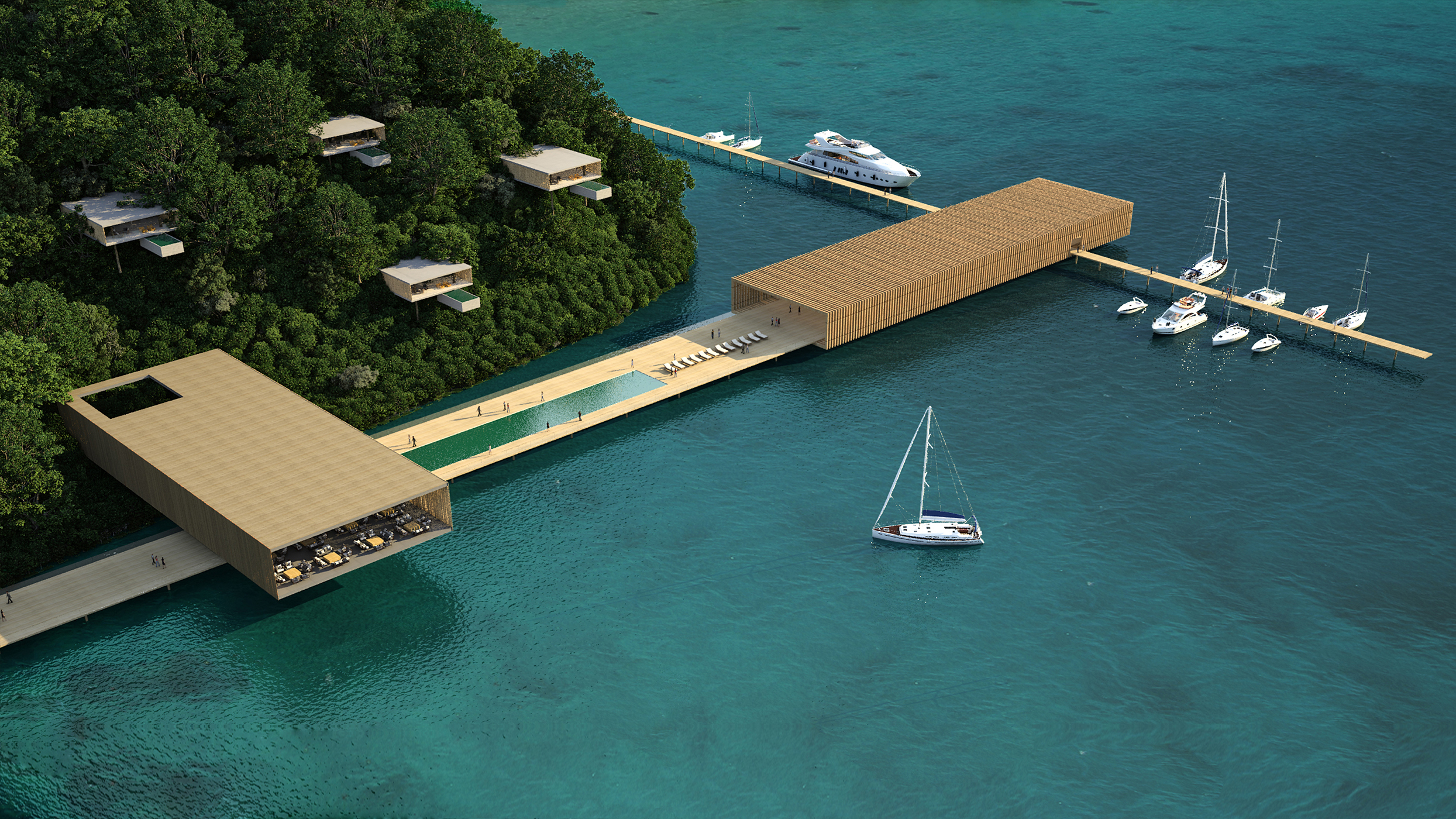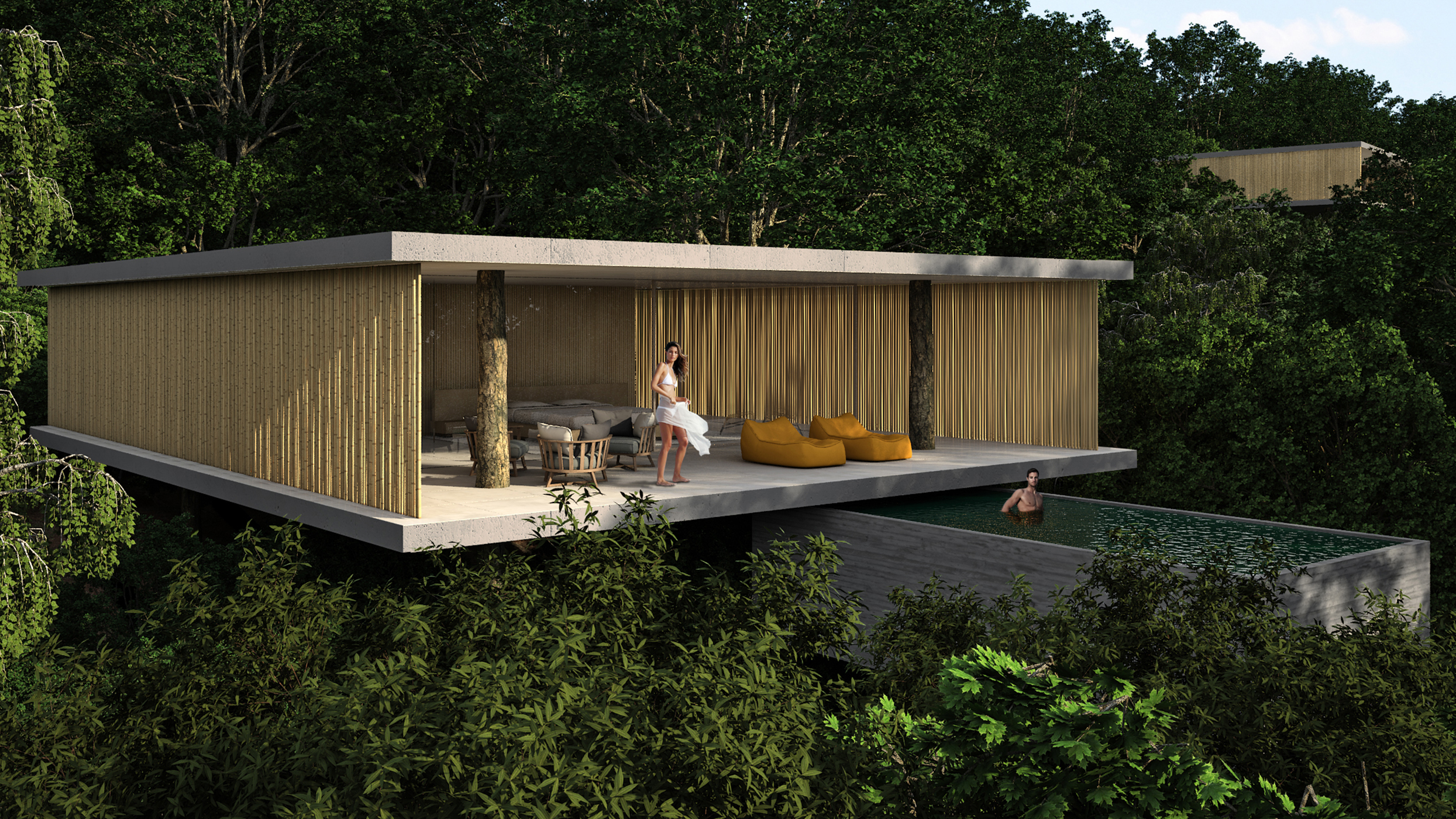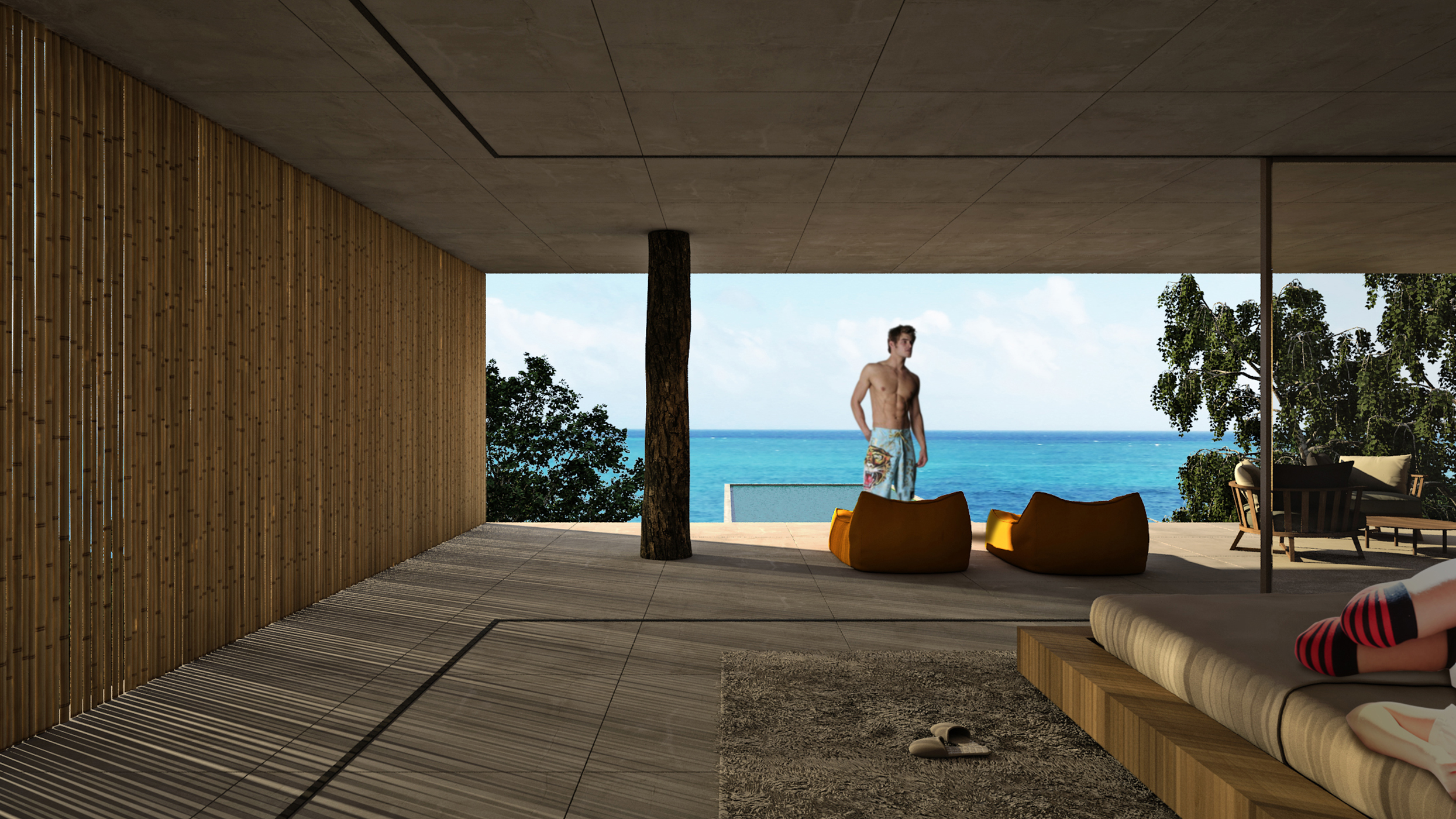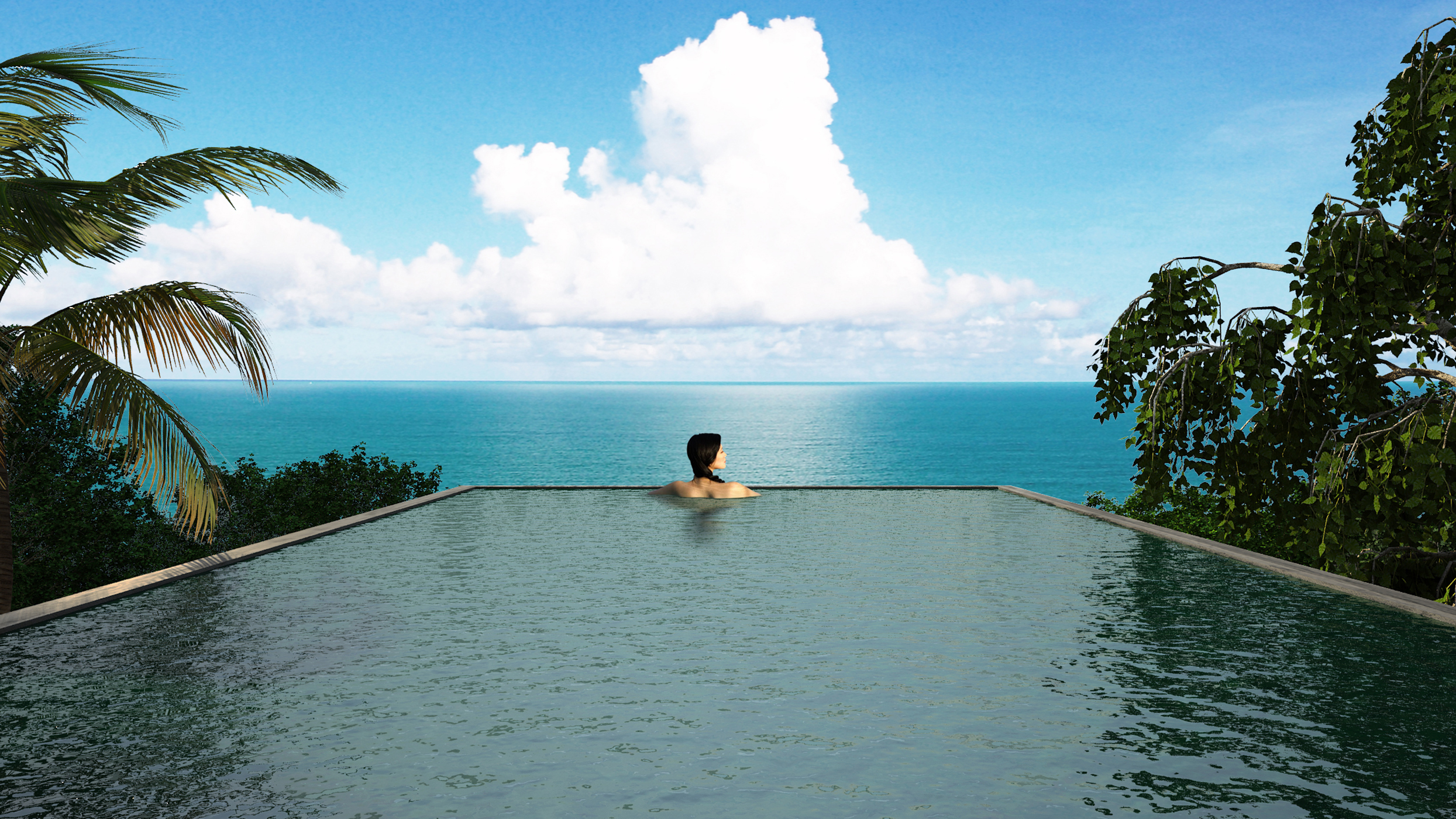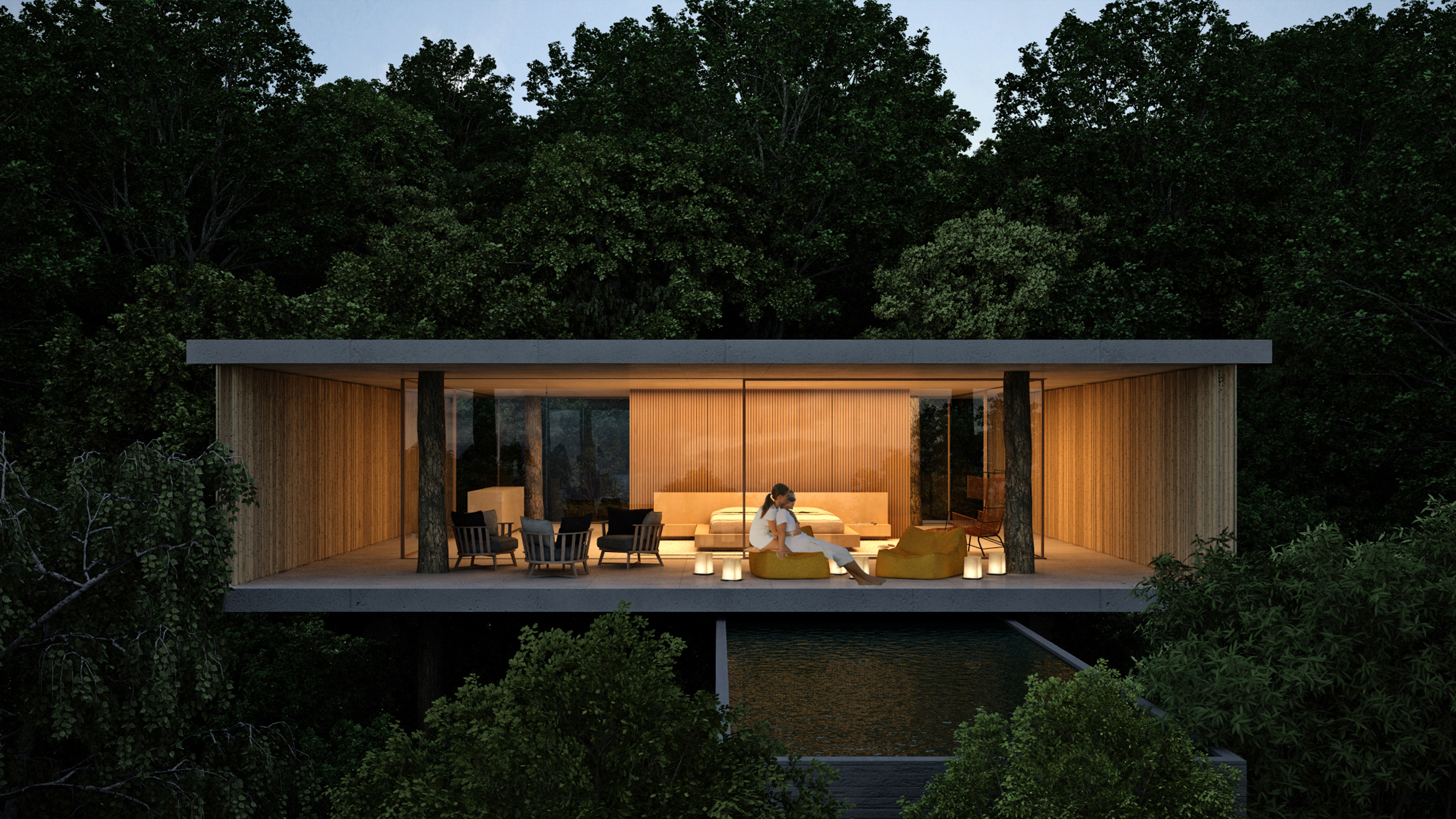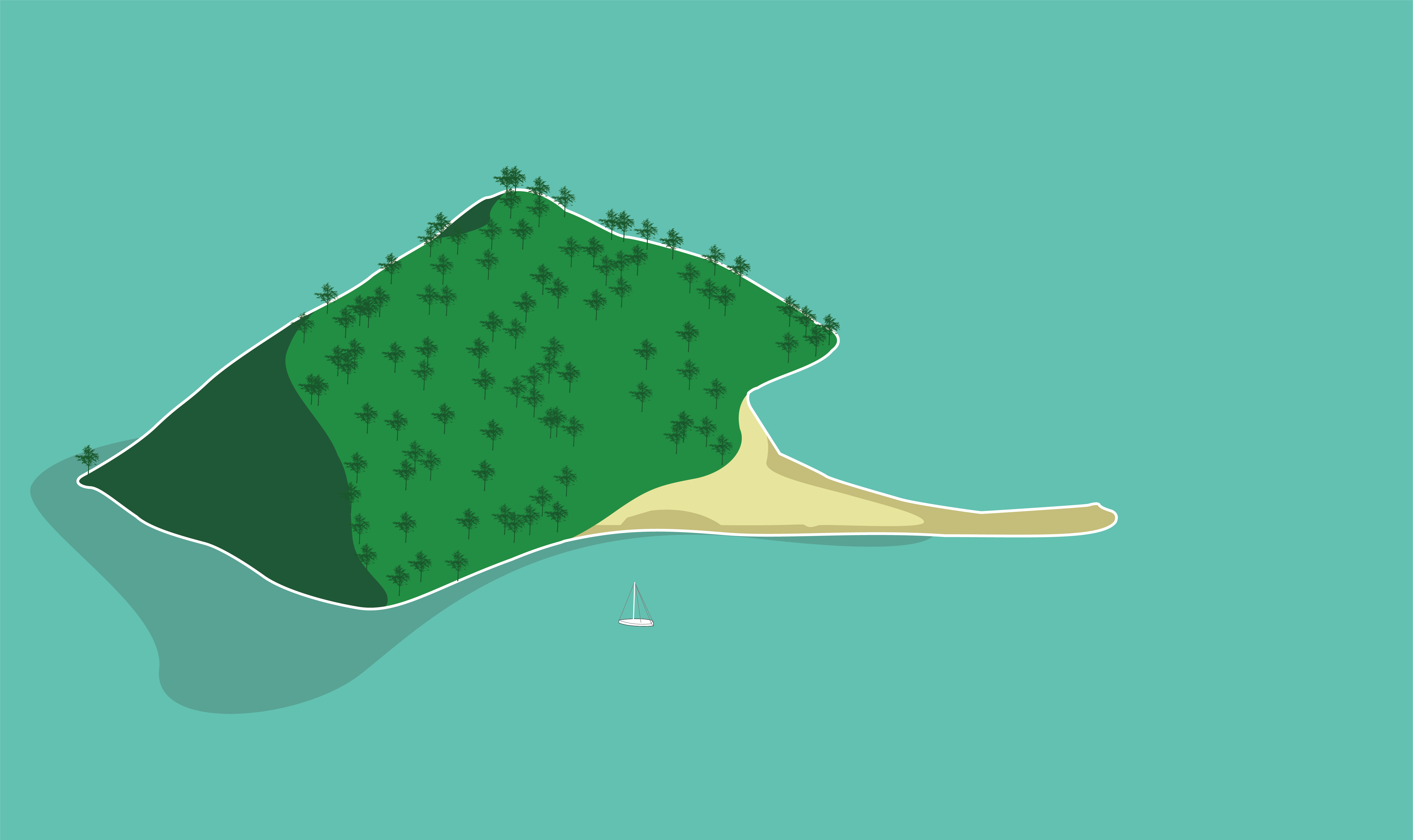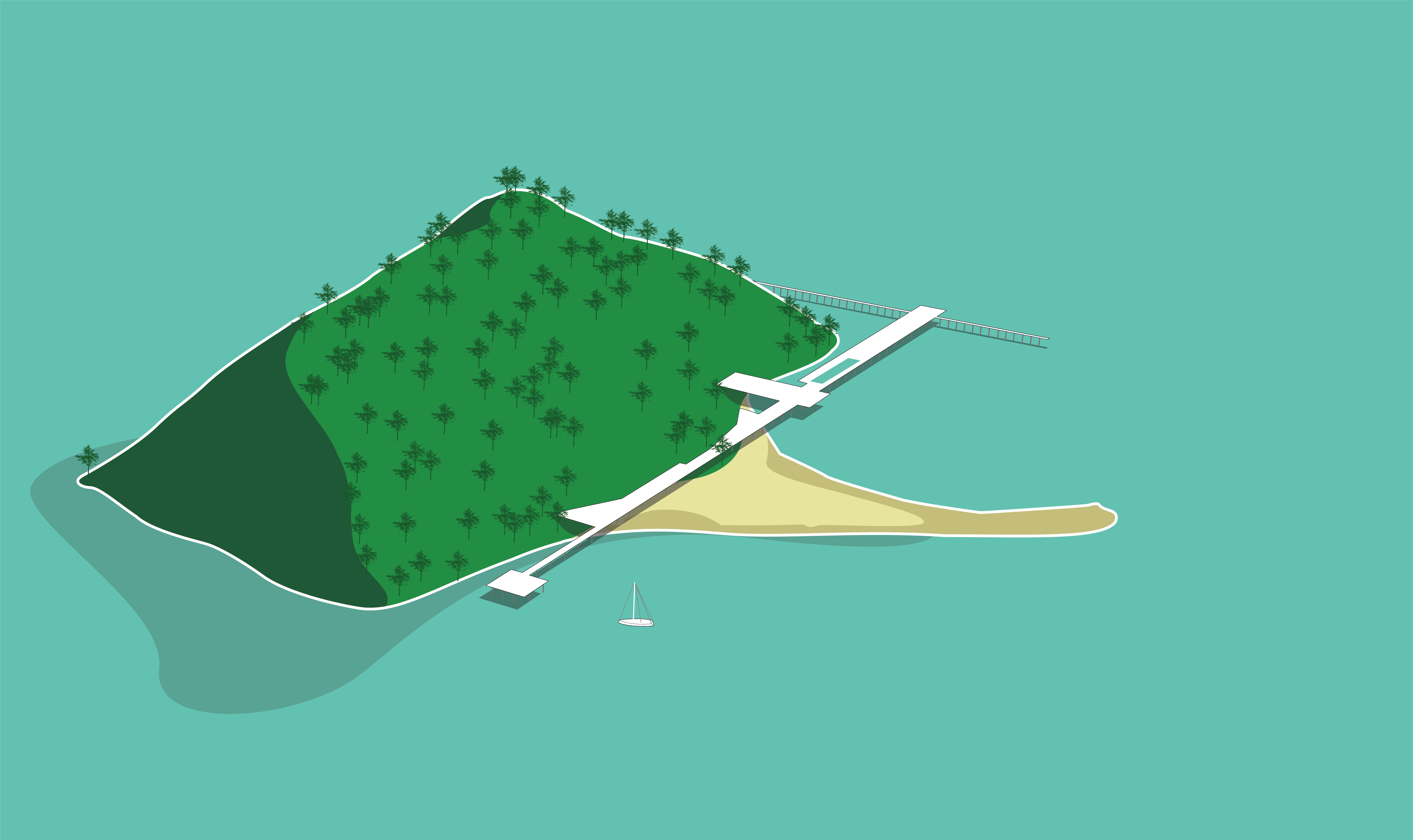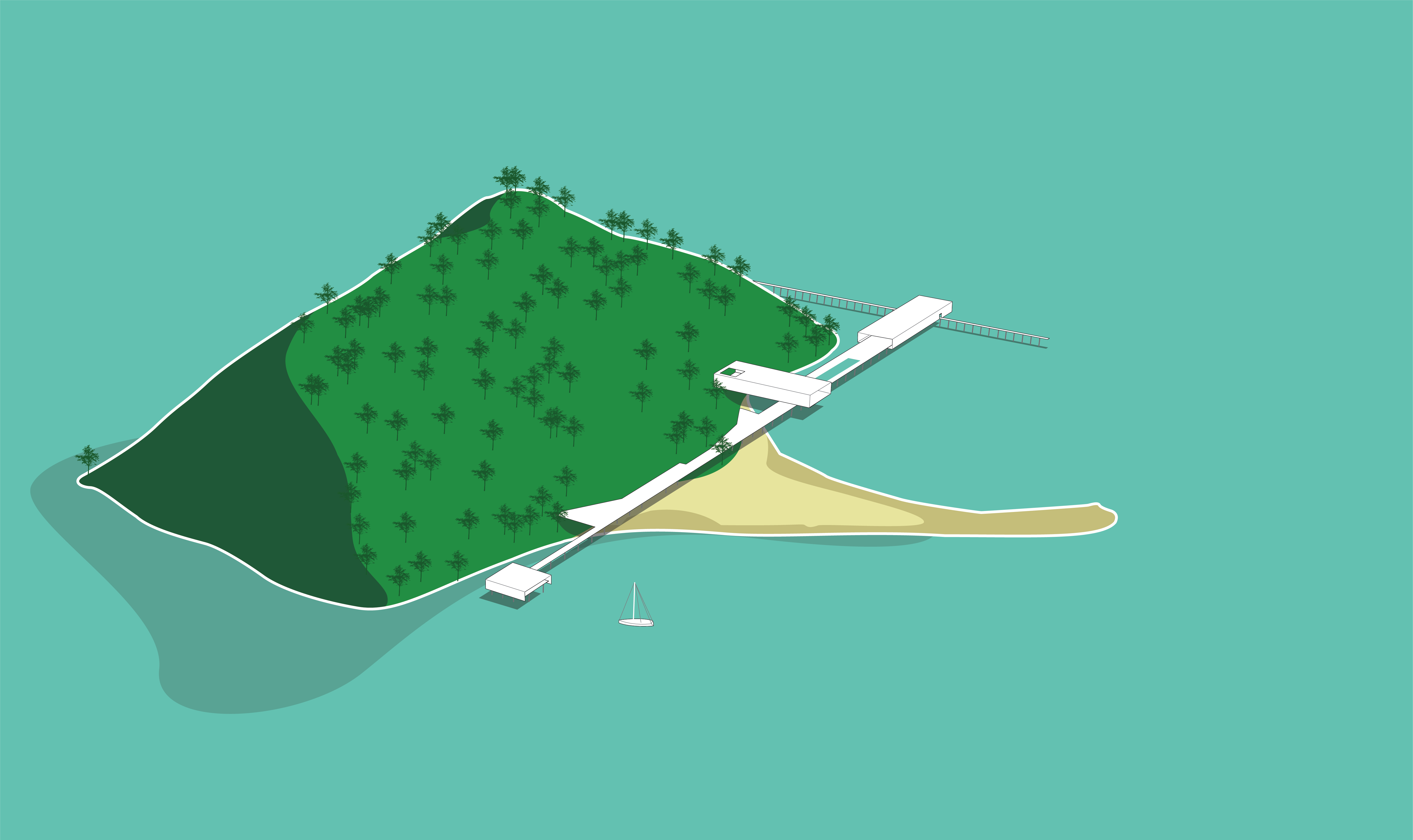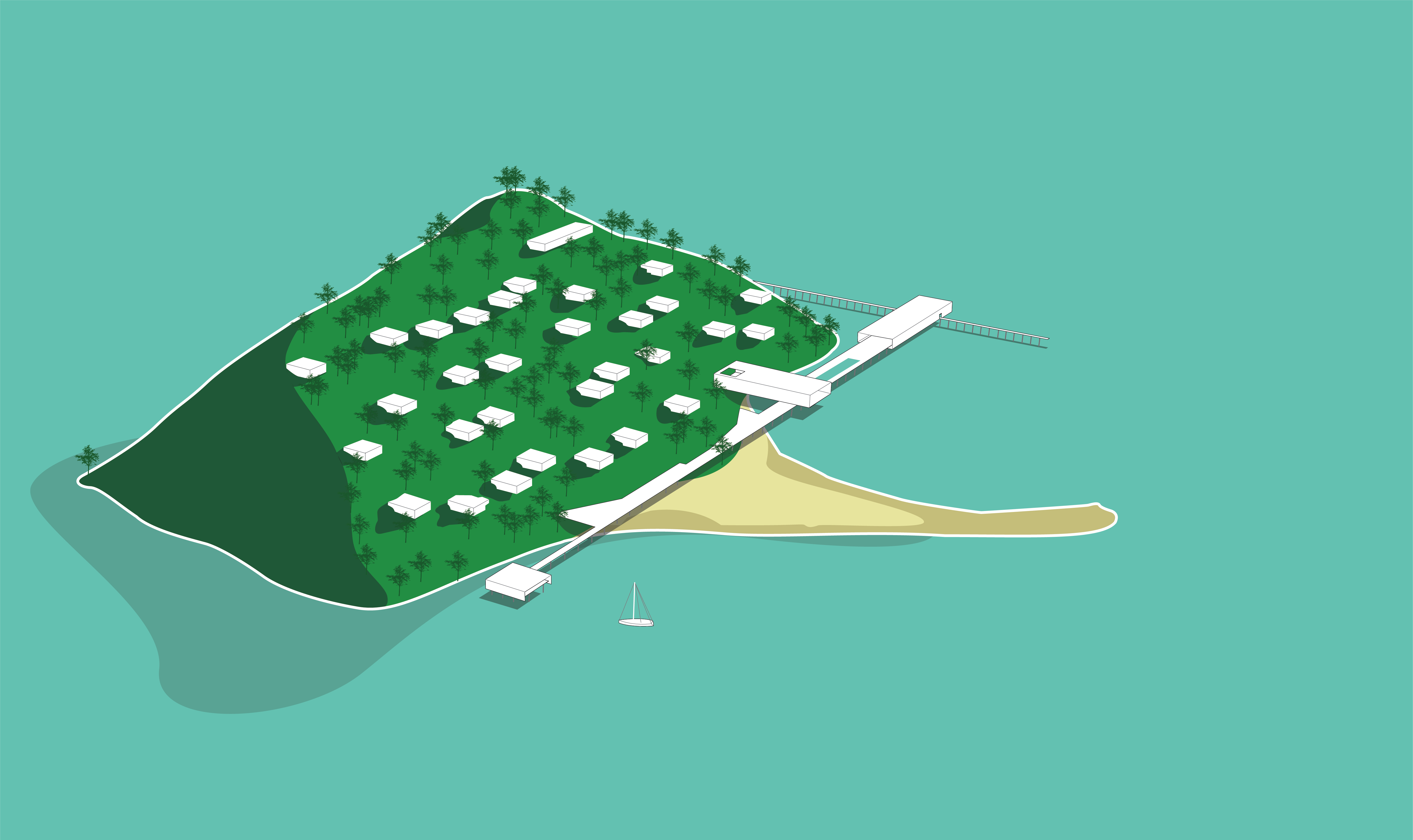At Hotel 11.1 – located on the island of Sulug, in Malaysia – the rooms are small modern bungalows delicately placed around the site, interfering as little as possible in the beautiful landscape of the island. These buildings rest on the land, camouflaged by the exuberant vegetation of the place. Thus, looking at the island from the sea and the beach, it is not possible to distinguish the rooms encrusted in the mountains from the green of nature.
If the rooms occupy the higher areas of the topography; the collective use is near the sea, directly connecting with the beach. These social activities were fused in volumes drawn with pure lines and connected by a longitudinal circulation axis, materializing in a wooden deck.
The dock for the arrival and departure of the ships is at one of these axis points. Running along the deck, there is a wooden archway housing the reception area. The axis crosses this building, passing the swimming pool and crossing a volume elevated by pilotis-palafitas where, on the first floor – is the restaurant. The same linear trajectory brings you to the other end and, a little further ahead, is a small chapel on the water.
Another trajectory, organic and hidden by the tropical forest, going up the mountain where all the rooms are connected – small modern cabins, built with material such as concrete, bamboo, glass and wood. The structure used pre-fabricated elements which shall be finished on-site. This solution was the reason found for the difficult process of building on an isolated site.
For the implantation and orientation of the rooms, the greatest amount of privacy was sought, taking advantage of the dense vegetation and the largest distance possible between the buildings was used. From all the rooms, and all the ambients, even from the pool and the deck, from the bed and the bathroom there is a total view of the sea.
The architecture privileged an isolated eastern orientation, as this was the best view, and took great advantage of the direction of the breeze and its cooling effect. The spa is located on the top of the island and opens entirely to a magnificent view.
The service and support areas are located on the northeastern part of the island on independent volumes, close to the docks to facilitate the arrival of products.
Respecting the local environment, the project used radical sustainable principles taking complete advantage of the inputs and the generation of energy from completely renewable sources.
Gabriel Kogan
location > sulug island . malasia
project > july . 2013
built area > 4.620 sqm
-
architecture > studio mk27
architect > marcio kogan
co-architects > eduardo gurian . gabriel kogan
communication team > carlos costa . laura guedes . mariana simas
At Hotel 11.1 – located on the island of Sulug, in Malaysia – the rooms are small modern bungalows delicately placed around the site, interfering as little as possible in the beautiful landscape of the island. These buildings rest on the land, camouflaged by the exuberant vegetation of the place. Thus, looking at the island from the sea and the beach, it is not possible to distinguish the rooms encrusted in the mountains from the green of nature.
If the rooms occupy the higher areas of the topography; the collective use is near the sea, directly connecting with the beach. These social activities were fused in volumes drawn with pure lines and connected by a longitudinal circulation axis, materializing in a wooden deck.
The dock for the arrival and departure of the ships is at one of these axis points. Running along the deck, there is a wooden archway housing the reception area. The axis crosses this building, passing the swimming pool and crossing a volume elevated by pilotis-palafitas where, on the first floor – is the restaurant. The same linear trajectory brings you to the other end and, a little further ahead, is a small chapel on the water.
Another trajectory, organic and hidden by the tropical forest, going up the mountain where all the rooms are connected – small modern cabins, built with material such as concrete, bamboo, glass and wood. The structure used pre-fabricated elements which shall be finished on-site. This solution was the reason found for the difficult process of building on an isolated site.
For the implantation and orientation of the rooms, the greatest amount of privacy was sought, taking advantage of the dense vegetation and the largest distance possible between the buildings was used. From all the rooms, and all the ambients, even from the pool and the deck, from the bed and the bathroom there is a total view of the sea.
The architecture privileged an isolated eastern orientation, as this was the best view, and took great advantage of the direction of the breeze and its cooling effect. The spa is located on the top of the island and opens entirely to a magnificent view.
The service and support areas are located on the northeastern part of the island on independent volumes, close to the docks to facilitate the arrival of products.
Respecting the local environment, the project used radical sustainable principles taking complete advantage of the inputs and the generation of energy from completely renewable sources.
Gabriel Kogan





